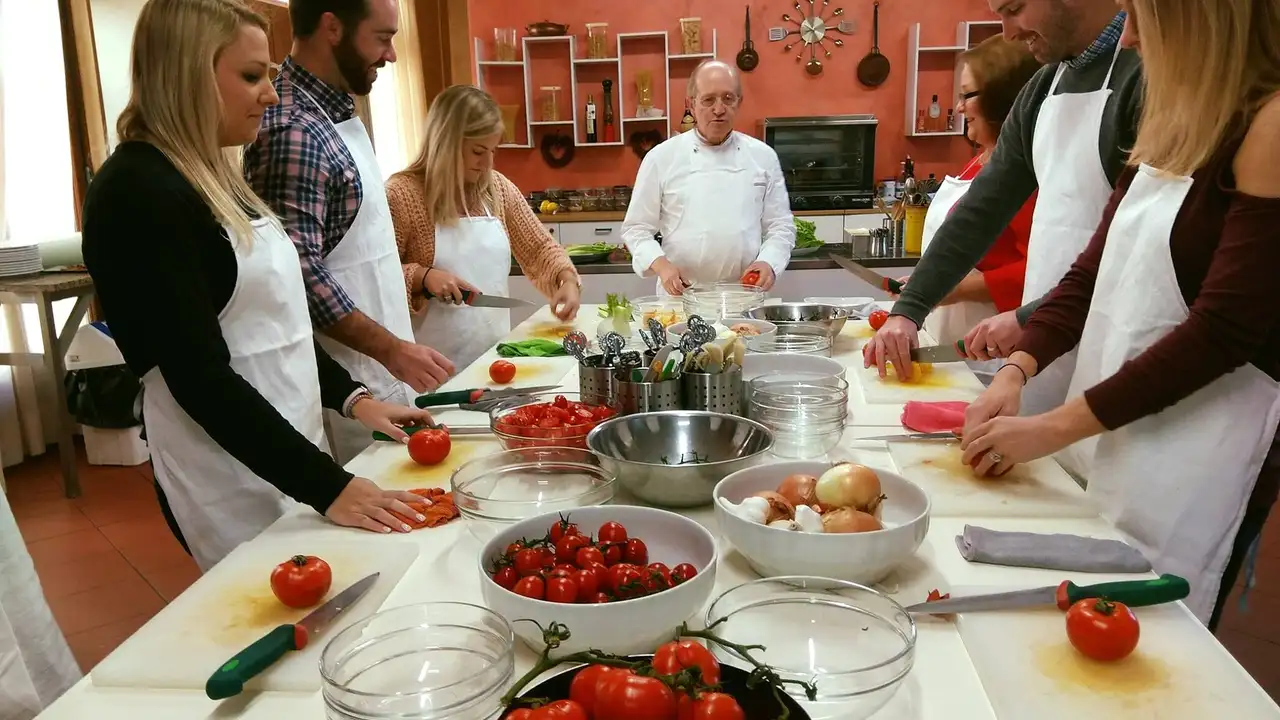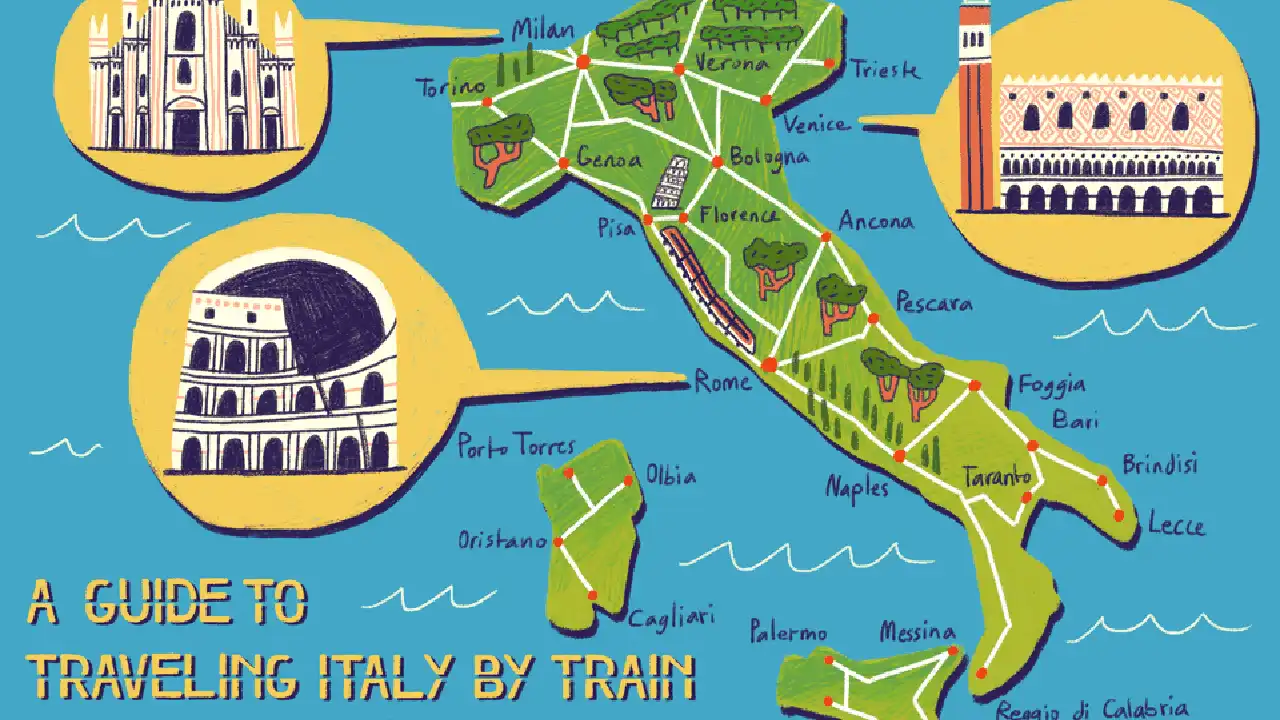Cooking Classes in Italy: Learn to Make Authentic Italian Dishes
Indulge in the delicious world of Italian gelato. Learn how to identify authentic gelato and discover the best gelaterias in Italy. Experience the perfect sweet treat.

Why Take an Italian Cooking Class?
Ever dream of whipping up a pasta dish that rivals nonna's? Or maybe you're just tired of those jarred sauces and want to unlock the secrets of authentic Italian cuisine. Taking a cooking class in Italy is more than just a fun activity; it's an immersive experience that connects you to the country's heart and soul. You'll learn about fresh ingredients, traditional techniques, and the passion that goes into every Italian dish. Plus, you get to eat your creations – bonus!
Choosing the Right Cooking Class Italian Style
So, you're sold on the idea. Now comes the fun part: picking a class. Italy has options galore, from intimate family-run workshops in Tuscany to professional culinary schools in Rome. Here's what to consider:
- Location, Location, Location: Think about where you'll be traveling. Do you want a rustic experience in the countryside or a city-based class? Tuscany is famous for its farm-to-table experiences, while cities like Bologna offer a wider range of culinary schools.
- Skill Level: Are you a complete beginner or a seasoned home cook? Some classes are geared towards novices, while others are more advanced. Be honest about your abilities to avoid feeling overwhelmed (or bored!).
- Focus: What do you want to learn? Pasta making is a popular choice, but you can also find classes focusing on pizza, regional specialties, desserts, or even specific ingredients like truffles.
- Language: Most classes are offered in English, but double-check to be sure. If you're feeling adventurous, you could even try a class in Italian!
- Group Size: Do you prefer a small, intimate setting or a larger, more social environment? Small groups allow for more personalized attention, while larger groups can be more affordable.
- Price: Cooking classes can range from €50 to €200+ per person, depending on the length, location, and inclusions. Set a budget beforehand and stick to it.
Must-Learn Italian Dishes in Your Cooking Class
Okay, let's talk food! Here are a few classic Italian dishes that are commonly taught in cooking classes and are definitely worth learning:
- Fresh Pasta: This is a must! Learn how to make pasta dough from scratch and shape it into different types like tagliatelle, ravioli, and gnocchi.
- Homemade Sauces: Forget the jar! Discover the secrets to making delicious tomato sauce, pesto, carbonara, and ragu.
- Pizza: Unleash your inner pizzaiolo and learn how to make authentic Neapolitan pizza with a crispy crust and flavorful toppings.
- Risotto: Master the art of making creamy, flavorful risotto with different ingredients like mushrooms, saffron, or seafood.
- Tiramisu: Indulge in this classic Italian dessert made with coffee-soaked ladyfingers, mascarpone cheese, and cocoa powder.
Recommended Cooking Classes in Italy for the American Traveler
Alright, let's get specific! Here are a few highly-rated cooking classes in Italy that are popular with American travelers:
- Florence Food Studio (Florence, Tuscany): Known for its hands-on pasta-making classes and market tours. They focus on Tuscan cuisine and offer a fun, relaxed atmosphere.
- Walks of Italy (Rome, Florence, Venice): This company offers a variety of cooking classes in different cities, catering to various skill levels and interests. They're known for their knowledgeable instructors and well-organized tours.
- Cooking Al Forno (Le Marche): If you want to get off the beaten path, consider this cooking school in the Le Marche region. They offer immersive experiences that include foraging for ingredients and learning about local traditions.
- The Roman Food Academy (Rome): A more professional culinary school that offers a range of classes, from beginner-friendly to advanced. They focus on classic Roman cuisine and offer a more structured learning environment.
Essential Kitchen Tools for Your Italian Cooking Adventures
Now that you're inspired to cook Italian food, let's talk about the tools you'll need. You don't need to buy everything at once, but here are a few essentials:
- Pasta Machine: A must-have for making fresh pasta. Look for a sturdy machine with different thickness settings. We recommend the Marcato Atlas 150.
- Good Quality Knives: A sharp chef's knife, paring knife, and bread knife are essential for any kitchen. Wüsthof and Victorinox are popular brands.
- Wooden Cutting Board: Choose a large, sturdy cutting board made from hardwood.
- Mixing Bowls: A set of nesting mixing bowls in different sizes is essential for prepping ingredients.
- Measuring Cups and Spoons: Accurate measuring is crucial for baking and cooking.
- Rolling Pin: A classic wooden rolling pin is perfect for rolling out pasta dough and pizza dough.
- Pasta Drying Rack: If you're making fresh pasta, a drying rack will help prevent it from sticking together.
- Pizza Stone or Steel: For achieving a crispy pizza crust in your home oven.
- Cast Iron Skillet: A versatile skillet for searing, frying, and baking.
Product Recommendations: Italian Cooking Essentials
Let's dive into some specific product recommendations to get you started on your Italian cooking journey. I'll cover a range of price points and use cases.
Pasta Machine Comparison: Marcato Atlas 150 vs. Imperia Pasta Machine
Marcato Atlas 150: This is the gold standard for home pasta makers. It's durable, easy to use, and comes with attachments for making different types of pasta. It typically retails for around $80-$100.
Imperia Pasta Machine: A slightly more affordable option that's still well-built. It's similar to the Marcato Atlas 150 but may not be quite as smooth in operation. Expect to pay around $60-$80.
Use Case: Both machines are great for making lasagna sheets, fettuccine, and tagliatelle. The Marcato Atlas 150 has more available attachments for making ravioli and other specialty pastas.
Olive Oil Tasting Set: A Beginner's Guide
Cobram Estate Ultra Premium California Olive Oil: While not *from* Italy, this brand offers a high-quality, readily available option that allows you to taste the difference between various olive varietals. A tasting set with three different oils (e.g., robust, mild, and delicate) might cost around $30-$40.
Use Case: Perfect for learning the nuances of olive oil flavor. Drizzle on salads, bread, or use for finishing dishes.
Pizza Stone vs. Pizza Steel: Achieving the Perfect Crust
Pizza Stone: A classic choice for home pizza baking. It absorbs heat and helps create a crispy crust. A good pizza stone will cost around $30-$50.
Pizza Steel: A more modern option that heats up faster and retains heat better than a pizza stone. It can also create a crispier crust. Expect to pay around $80-$120 for a good pizza steel.
Use Case: Both are used in a hot oven (500°F or higher) to bake pizzas. The pizza steel is generally considered to be the superior option for achieving a truly authentic Neapolitan-style crust.
Mortar and Pestle: The Key to Authentic Pesto
Granite Mortar and Pestle: Essential for making authentic pesto. The rough surface of the granite helps to release the oils and flavors of the basil and other ingredients. A good-sized granite mortar and pestle will cost around $30-$50.
Use Case: Making pesto, grinding spices, and crushing herbs.
Learning from the Best: Online Italian Cooking Resources
Can't make it to Italy right now? No problem! There are plenty of online resources to help you learn Italian cooking at home. Here are a few of my favorites:
- YouTube Channels: Channels like "Pasta Grannies," "Laura Vitale," and "ChefSteps" offer free cooking tutorials and recipes.
- Online Cooking Classes: Websites like "MasterClass" and "Skillshare" offer paid cooking classes taught by professional chefs.
- Italian Food Blogs: Blogs like "Memorie di Angelina," "The Italian Dish," and "Emiko Davies" offer authentic Italian recipes and cooking tips.
Bringing Italy Home: Share the Food with Your Friends and Family
The best part about learning to cook Italian food is sharing it with others. Invite your friends and family over for an Italian-themed dinner party and show off your newfound skills. Prepare a multi-course meal, complete with appetizers, pasta, main course, and dessert. Don't forget the wine!
More than Just Food: The Experience
Taking a cooking class in Italy is about so much more than just learning to cook. It's about immersing yourself in the culture, connecting with locals, and creating memories that will last a lifetime. So, go ahead and book that class, buy those ingredients, and get ready to embark on a delicious adventure!
:max_bytes(150000):strip_icc()/277019-baked-pork-chops-with-cream-of-mushroom-soup-DDMFS-beauty-4x3-BG-7505-5762b731cf30447d9cbbbbbf387beafa.jpg)






